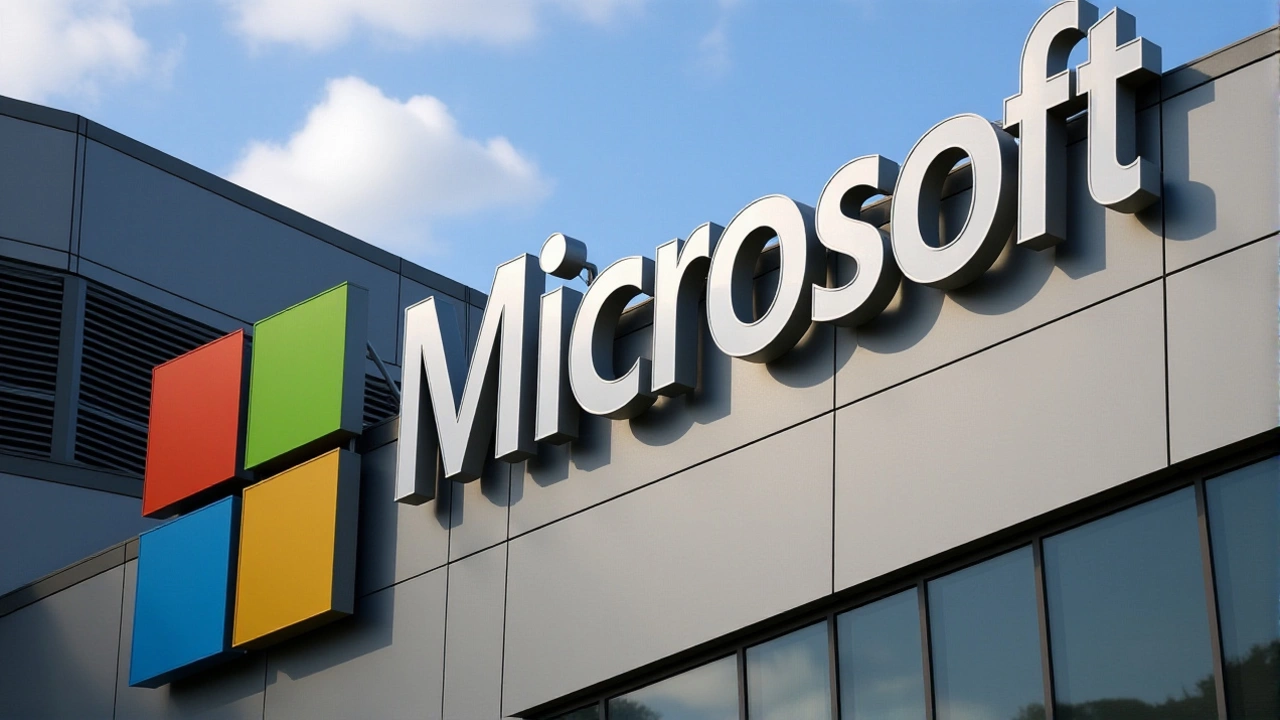
On October 29, 2025, at 12:00 PM Eastern Time, a single misconfigured setting in Azure Front Door — Microsoft’s global traffic routing system — sent shockwaves through the digital world. Microsoft’s cloud services, including Microsoft 365, Xbox Live, and Minecraft, went dark for millions. Users couldn’t log in. Businesses couldn’t process payments. Even New Zealand’s police websites crashed. The cause? A routine update gone wrong. And it happened just hours before Microsoft’s quarterly earnings call — a timing that made the outage impossible to ignore.
How One Setting Broke the Internet
The root of the problem wasn’t a hack, a server crash, or a power failure. It was a configuration change — a tweak to Azure Front Door — meant to optimize traffic flow across Microsoft’s data centers. Instead, it triggered a cascading failure. The system, which acts like a global air traffic controller for internet requests, started misrouting traffic. Requests for Microsoft 365 email, Xbox game servers, and even Minecraft multiplayer lobbies were either dropped or sent into digital black holes.
By 3:57 PM ET, Microsoft’s engineers had identified the faulty setting and initiated a rollback to the “last known good configuration.” But rolling back a global system isn’t flipping a switch. It took time to isolate the damage, reroute traffic through healthy nodes, and revalidate each region’s connectivity. Full recovery wasn’t declared until 23:20 UTC — nearly 12 hours after the first reports surfaced.
Who Got Hit — And How Badly
The outage didn’t just annoy gamers. It crippled real-world operations. Alaska Airlines reported check-in systems failing, forcing passengers to line up at counters. Air New Zealand couldn’t process digital boarding passes or payments, leading to flight delays and cancellations. Even government sites in New Zealand — including those for police and parliament — went offline, raising concerns about emergency response capabilities.
Corporate users weren’t spared. Costco and Starbucks saw their online ordering platforms stall. Microsoft’s own support pages became unreachable, trapping customers in a feedback loop of frustration. On Reddit, users posted screenshots of endless loading spinners on Game Pass, while enterprise admins scrambled to find workarounds.

The Workarounds and the Hidden Resilience
Microsoft didn’t just sit back and wait. Engineers pushed out guidance: use PowerShell scripts and command-line tools. For IT teams, this was a lifeline. Many administrators who relied on the Azure portal for managing cloud resources switched to CLI tools — bypassing the broken web interface entirely. It wasn’t pretty, but it worked. In some cases, companies with hybrid setups reported minimal disruption because their critical apps ran on-premises or on rival clouds.
Still, the incident exposed a dangerous dependency. If a single service like Azure Front Door can knock out everything from email to airline check-ins, how resilient is our digital economy? The answer, it turns out, isn’t very.
A Pattern Emerges — AWS, Then Microsoft
This wasn’t an isolated event. Just seven days earlier, Amazon Web Services suffered a massive outage that crippled streaming services, food delivery apps, and financial platforms. Now, Microsoft’s cloud went down. Both were caused by internal configuration errors — not cyberattacks or natural disasters. The pattern is clear: as cloud providers grow more dominant, their internal mistakes become global events.
Microsoft is the second-largest cloud provider globally, behind AWS but ahead of Google Cloud. That means a lot of the internet runs on its infrastructure. When it stumbles, the whole web feels it. And with cloud adoption accelerating — especially in healthcare, finance, and government — the stakes keep rising.

What Comes Next?
Microsoft has promised a full post-mortem. But insiders say the real question isn’t just what went wrong — it’s why the system didn’t catch it before deployment. Automated validation checks, canary releases, and regional rollback protocols are standard industry practice. Why didn’t they stop this?
Meanwhile, businesses are reassessing their cloud strategies. Some are pushing for multi-cloud setups. Others are investing in hybrid models. One Fortune 500 CIO told The Wall Street Journal (in an off-the-record comment): “We thought redundancy meant having backup servers. Turns out, it means having backup providers.”
The next big test? Microsoft’s upcoming Azure AI upgrades. If they roll out changes with the same lack of safeguards, the next outage could be even bigger.
Frequently Asked Questions
How long did the Microsoft Azure outage last?
The outage lasted approximately 12 hours, beginning at 12:00 PM ET on October 29, 2025, and ending at 23:20 UTC (6:20 PM ET). Microsoft began mitigation efforts at 3:57 PM ET by rolling back the faulty configuration, but full global recovery took several more hours due to the scale of traffic rerouting required across data centers in North America, Europe, and Asia-Pacific.
Which services were affected by the Azure Front Door outage?
Key services impacted included Microsoft 365 (Outlook, Teams, SharePoint), Xbox Live, Minecraft multiplayer servers, Microsoft Copilot, and Azure Portal access. External services relying on Azure infrastructure also failed — such as Alaska Airlines’ check-in systems, Air New Zealand’s digital boarding passes, Costco’s online ordering, Starbucks’ payment platforms, and even government websites in New Zealand.
Why did Microsoft’s own support pages go down during the outage?
Microsoft’s support pages are hosted on Azure infrastructure, including Azure Front Door for global content delivery. When the configuration error disrupted traffic routing, even Microsoft’s internal tools and customer-facing sites became unreachable. This created a vicious cycle: users couldn’t get help because the help system itself was broken.
Could businesses have avoided disruption during the outage?
Yes — but only if they prepared. IT teams using PowerShell or Azure CLI tools could still manage resources without the web portal. Companies with multi-cloud strategies or on-premises backups experienced far less impact. The outage highlighted that relying solely on one cloud provider, even Microsoft, leaves organizations vulnerable to single points of failure.
How does this compare to the recent AWS outage?
The AWS outage, which occurred on October 22, 2025, affected similar services — including Netflix, Disney+, and financial apps — and was also caused by an internal configuration error. Both incidents underscore a growing trend: as AWS and Microsoft dominate cloud infrastructure, their operational mistakes now have worldwide consequences, making cloud resilience a top-tier business risk.
What’s Microsoft doing to prevent this from happening again?
Microsoft has committed to a full post-mortem and plans to implement stricter pre-deployment validation for Azure Front Door changes. Sources indicate they’re introducing mandatory regional phased rollouts and automated traffic anomaly detection. However, no timeline has been publicly shared, and critics argue that past promises after similar outages have yet to be fully realized.
